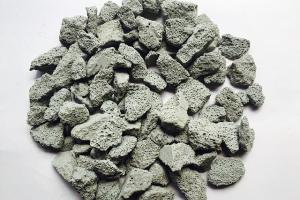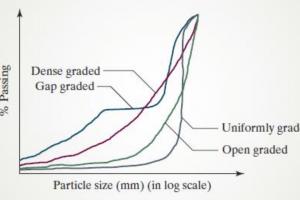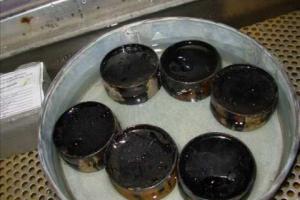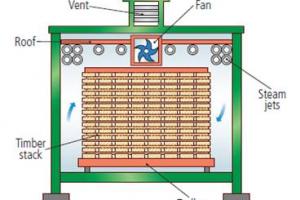Environmental Impact of Ordinary Portland Cement

The production of Ordinary Portland Cement (OPC) has significant environmental impacts that are often overlooked. While cement is a crucial component of many construction projects, the processes involved in its production can lead to the emission of harmful pollutants and contribute to climate change.
The primary environmental issue associated with OPC production is the release of carbon dioxide (CO2) during the manufacturing process. Cement production is responsible for approximately 8% of global carbon emissions, making it a significant contributor to climate change. During the production of cement, limestone and other raw materials are heated to high temperatures, resulting in the release of CO2. The chemical reactions involved in the production process also generate CO2 emissions.
The mining and transportation of raw materials for cement production can also have negative environmental impacts. The extraction of limestone and other raw materials can lead to habitat destruction and soil erosion. The transportation of these materials can also contribute to air pollution and greenhouse gas emissions.
Furthermore, the high energy consumption required for cement production leads to the emission of other harmful pollutants, such as particulate matter, sulfur dioxide, and nitrogen oxides. These pollutants can have significant impacts on human health and the environment, leading to respiratory issues and acid rain.
Finally, the disposal of waste products from cement production can also negatively impact the environment. Cement kiln dust, a byproduct of the production process, contains heavy metals and other pollutants that can leach into the soil and water, leading to environmental degradation.
Several initiatives have been undertaken to reduce the environmental impact of cement production. For example, the use of alternative fuels, such as biomass and waste materials, can help reduce greenhouse gas emissions. Additionally, the use of alternative materials, such as fly ash and slag, can also reduce the environmental impact of cement production.
In conclusion, while cement is an essential component of many construction projects, its production can have significant environmental impacts. The release of carbon dioxide, the extraction of raw materials, the emission of harmful pollutants, and the disposal of waste products are all issues that need to be addressed to minimize the environmental impact of cement production. By adopting more sustainable practices, such as the use of alternative fuels and materials, the cement industry can play a crucial role in reducing greenhouse gas emissions and mitigating the impact of climate change.
The cement manufacturing industry is labor-intensive and uses large-scale and potentially hazardous manufacturing processes. The industry experiences high accident rates compared with some other manufacturing industries. There are several hazards inherent to the cement production process. Some examples of health hazards are:
- Exposure to dust and high temperatures;
- Contact with allergic substances; and
- Noise exposure
And some examples of safety hazards:
- Falling / impact with objects
- Hot surface burns
It is the responsibility of the government to implement the laws as described in the EPA (Environmental Protection Agency) rule to protect both the environment and human health.
Environmental Impact of Ordinary Portland Cement
Ordinary Portland Cement (OPC) is one of the most widely used types of cement in the construction industry. While it plays a crucial role in building infrastructure, it also has significant environmental impacts throughout its lifecycle. Here are some key aspects of the environmental impact of Ordinary Portland Cement:
1. Greenhouse Gas Emissions:
OPC production is a major source of carbon dioxide (CO2) emissions. The primary source of these emissions is the calcination process, where limestone (calcium carbonate) is heated to produce lime (calcium oxide), releasing CO2 as a byproduct. Additionally, the energy-intensive nature of cement production, including the use of fossil fuels for kiln firing, contributes to CO2 emissions.
2. Energy Consumption:
The production of OPC requires substantial energy inputs. The raw materials extraction, grinding, and kiln processes are energy-intensive, primarily relying on fossil fuels. This energy consumption contributes to the depletion of natural resources and the emission of greenhouse gases.
3. Raw Material Extraction:
OPC production involves the extraction of raw materials such as limestone, clay, and gypsum. The mining and quarrying these materials can result in habitat destruction, soil erosion, and landscape alteration. It can also have negative impacts on local biodiversity and ecosystems.
4. Water Consumption and Pollution:
Cement production requires significant amounts of water for cooling and dust suppression. Water is also used in the mixing and curing processes. The extraction of water from natural sources, such as rivers and aquifers, can deplete local water resources. Moreover, the discharge of untreated or poorly treated wastewater from cement plants can lead to water pollution and harm aquatic ecosystems.
5. Air Pollution:
OPC production can release various air pollutants, including particulate matter, sulfur dioxide (SO2), nitrogen oxides (NOx), and volatile organic compounds (VOCs). These pollutants contribute to air pollution, which can have detrimental effects on human health, vegetation, and ecosystems.
6. Waste Generation:
Cement manufacturing generates various types of waste, including kiln dust, cement kiln bypass dust, and solid residues from air pollution control devices. Improper management of these wastes can lead to soil contamination and pose risks to human health and the environment.
Efforts are being made to mitigate the environmental impact of OPC through various means, such as improving energy efficiency, using alternative fuels and raw materials, and developing low-carbon types of cement like blended cement and supplementary cementitious materials (SCMs). Additionally, sustainable construction practices, including reducing cement usage, promoting recycling, and utilizing eco-friendly building materials, can help minimize the overall environmental footprint of construction projects.












